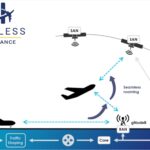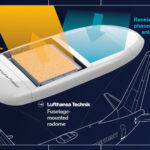As Qatar Airways looks towards its Starlink implementation just how passengers will interact with the service remains a significant open question, one SVP of Product Development and Design Xia Cai almost answered recently.
Low Earth Orbit
Get SAT gets airborne with Ku-band ESA
The Get Sat Ku-band ESA went flying, part of its testing program as it moves towards certification for in-flight connectivity services.
Hawaiian delivers nearly flawless in-flight internet with Starlink
Yes, the Starlink service on Hawaiian Airlines performs as well as the companies promise. But, also, a couple interesting quirks in the “seamless” experience.
Anuvu updates microGeo timeline, adds fun satellite names
Anuvu’s dedicated microGEO satellite constellation, developed by Astranis has a timeline to get the payloads into space. In an update earlier this month the company disclosed a launch timeline of “mid-2024,” as well as names of the new satellites.
Can NTN standards streamline airline connectivity installs?
Installing inflight internet service typically means expensive, proprietary hardware, locking airlines in to one provider for an extended period of time. The Seamless Air Alliance hopes to change that with a modem solution built on 3GPP NTN standards.
VietJet signs on for AirFi LEO trial
AirFi has added another customer for its lightweight LEO connectivity offering in Asia. The company inked a deal with VietJet to trial its inflight internet service on two aircraft, announced at the Singapore Air Show.
Lufthansa Technik to provide radomes for Hanwha Phasor ESAs
Hanwha Phasor has high hopes for its aero ESA product, set to enter the market next year. It will support that with a new radome designed, developed, and manufactured by Lufthansa Technik under a multi-year deal announced today.
Rumor has it…
With a major IFC contract ready to be awarded, could a dark horse score an unexpected win?
Gogo, Satcom Direct push forward with LEO ESAs
Electronically steered antennas will be a major part of the next generation of connectivity for the business aviation world. Both Satcom Direct and Gogo made progress on that front this week, offering updates to their terminal development and testing.
Hawaiian activates Starlink with "surprise and delight" availability
Just a week after announcing the service was certified, Hawaiian Airlines officially launched its inflight internet era on Thursday. But the first plane to serve passengers was not the first install.









